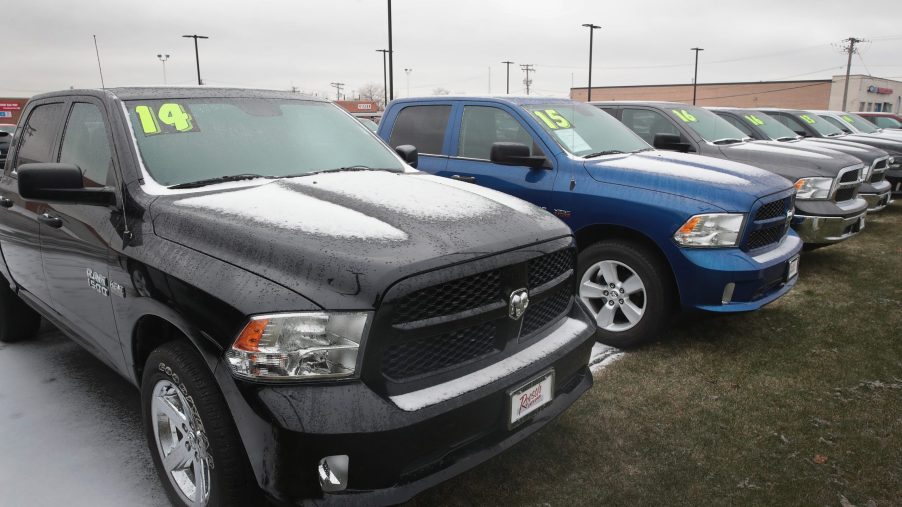
Ram Used a Clever Trick to Dramatically Increase Truck Sales
Despite the effects of the economic shutdowns this year, many dealers are reporting increased surges in vehicle sales this summer. In particular, truck sales are booming. Americans still love and need their beloved pickups. And the competition in this segment is steep, with the likes of best-selling Ford F-150, the Chevy Silverado, and the Ram 1500.
Ram has devised a clever way to increase its share of the truck market too. The bighorn brand shared how it has creatively found a way to get ahead in a recent Edmunds analysis release.
How Ram leveraged its truck sales
Diving into the data for Edmunds’ “the great pickup truck comeback” report, it’s clear that Ram got creative to drum up more pickup sales. Having recognized that not all truck buyers can afford the often hefty MSRPs, Ram turned to leasing as a solution.
Leasing made affording the Ram truck easier in monthly digestible amounts, instead of long-term, foreboding price tags. In 2019, 33% of Ram 1500s were leased. It’s an efficient way to get the consumers the trucks they need, without bearing financial setback at the manufacturing level.
A 10-year trend of a successful strategy
The Edmunds report evaluates and compares truck sales and leasing over the past 10 years. Looking back in 2009, Ram wasn’t the heavy leasing contender that it is today. However, from 2012 through the end of 2019, the number of Ram pickup truck leases has grown substantially, signifying the automaker’s clever solution to rising truck prices.
In recent years, it was nearly double the amount of pickup leases logged for Chevrolet. And others like the Toyota Tundra and Nissan Titan have barely registered on the lease charts.
Why leasing is smart for dealerships
How does leasing work then if no one is actually buying the new truck? Leasing is smart for manufacturers who can count the leased pickup as an official sale. It makes sense for the buyer who doesn’t want to secure a loan and prefers a manageable monthly payment instead.
It’s at the dealership level that financing on a particular vehicle is arranged. A lease company is, in a sense, the financing source for the vehicle. Once a lease is signed by a customer, the dealer gets the selling price of the truck from the finance company, and along with it a healthy profit margin.
The dealer can then incorporate markups and generate revenue with add-ons, like Gap insurance, for example. So, in a way, leasing can be a win-win-win for everyone involved in the lease.
When leasing a Ram truck is smart for consumers
Based on the Edmunds pickup truck report, leasing proved to be ideal for other automakers too. Because truck prices have continued to increase in recent years, well into the $50,000 to $75,000 range, consumers have grown hungry for more affordable options.
Leasing isn’t the same as owning, but just looking at the monthly payment benefits of a lease, people saved an average of $247 every month. Leasing is also helpful to some who struggle to secure loan approval at first. Imagine a lower monthly payment, for that same new truck, that you’ll get to trade in every few years for a newer model.
Leasing doesn’t make sense for every truck buyer. But it’s proving to be the genius way many automakers like Ram are increasing their customer base for pickups.


